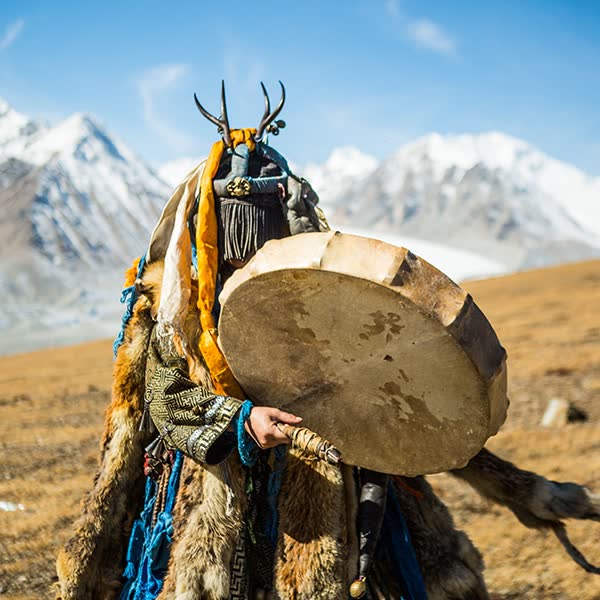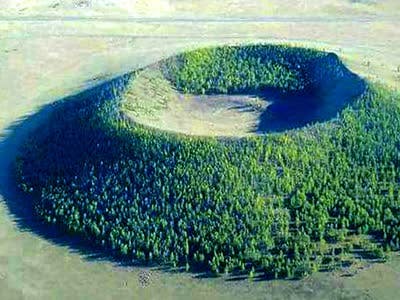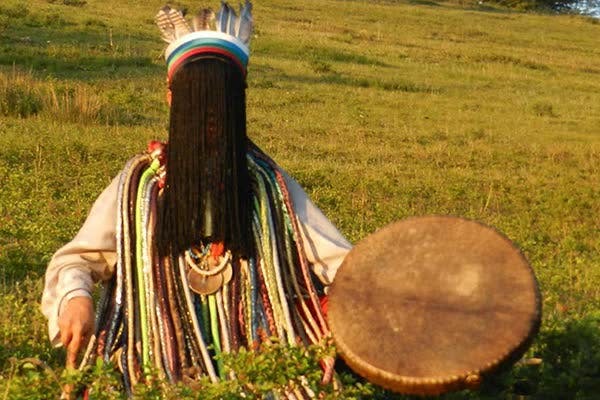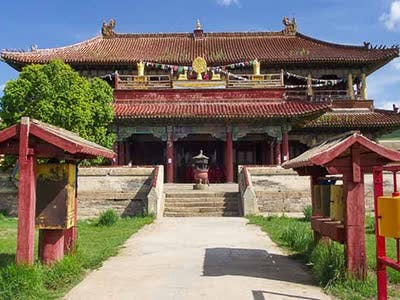Mongolian Shamanism
🔮 MONGOLIAN SHAMANISM: SPIRITUAL ROOTS OF THE STEPPE
Mongolian Shamanism, also called Tengerism, is the ancient animistic and spiritual belief system of the Mongolian people. Deeply rooted in nature worship, ancestor veneration, and communication with spirits, it predates Buddhism in Mongolia and remains a vital cultural thread—especially in rural and nomadic communities.
Shamanism is practiced by shamans (böö), spiritual intermediaries believed to connect humans with the spirit world through ceremonies, drumming, chanting, and altered states of consciousness. Despite suppression during the socialist era, Shamanism is now experiencing a revival as part of Mongolia’s cultural and national identity.
📌 QUICK FACTS
| Icon | Detail |
|---|---|
| 🌍 Origin | Central Asia, predating Buddhism |
| 🧙 Practitioners | Shamans (Böö) and shamankas (Udgan) |
| 🌳 Core Belief | Nature and ancestor spirits influence life |
| 🎵 Ritual Tools | Drums, bells, costumes, fire, chanting |
| 🔄 Modern Status | Actively practiced, especially in the north |
| 🛐 Sacred Sites | Ovoos (stone cairns), rivers, trees, mountains |

✨ KEY ELEMENTS OF MONGOLIAN SHAMANISM
🌌 Tenger (Sky Spirits)
Supreme beings or “eternal blue sky” that oversee the spiritual realm.
👻 Ancestor Spirits
Revered and consulted for wisdom, protection, and guidance.
🌲 Nature Spirits
Believed to inhabit mountains, rivers, and sacred trees.
🧥 Shamanic Garb
Shamans wear elaborate costumes with fringe, mirrors, and antlers to symbolize transformation.
🥁 Shamanic Drumming
Rhythmic drumming induces trances for spirit travel or healing.
🔥 RITUALS & PRACTICES
🔮 Spirit Communication
Shamans perform ceremonies to connect with spirits, diagnose illness, or seek answers.
🛐 Ovoo Worship
Sacred cairns on mountaintops are worshiped with offerings like milk, vodka, and silk.
👣 Initiation Ceremonies
Shamans undergo dreams or crises believed to be callings from the spirit world.
💨 Trance Journeys
Shamans enter altered states through drumming, singing, and smoke to journey between worlds.

🌄 MODERN SHAMANISM IN MONGOLIA
🧭 Centers of Practice
Still widely practiced in Northern Mongolia, especially among Darkhad and Tsaatan communities.
🕊️ Cultural Revitalization
Post-1990s, there’s been a cultural resurgence of Shamanism in both rural and urban Mongolia.
🔄 Blended Beliefs
Many Mongolians combine Shamanism with Buddhism, creating a unique spiritual blend.
🙋 FAQ
❓ Is Shamanism a religion or belief system?
It is a spiritual practice and worldview rather than an organized religion.
❓ Can foreigners witness a Shaman ceremony?
Yes, but it depends on the community. Some rituals are open; others are private.
❓ Is Shamanism still practiced today?
Absolutely. It’s especially active in northern and central Mongolia.
❓ Are there female shamans?
Yes—called Udgan, female shamans are often highly respected.
🧳 VISITOR TIPS
🙏 Be Respectful
Avoid photographing shamans or ceremonies without permission.
🧭 Travel with Local Guides
Authentic experiences are best arranged through local shamans or cultural experts.
🔺 Respect Sacred Sites
Do not disturb ovoos or natural formations considered sacred.
🍶 Offerings
When visiting an ovoo, locals may offer milk, vodka, or coins.
🌟 WHY IT MATTERS
🔗 Cultural Continuity
Shamanism preserves Mongolia’s ancient worldview and oral traditions.
🌿 Spiritual Connection to Nature
Emphasizes respect for nature—an essential value in today’s ecological crisis.
🐎 Part of Nomadic Identity
Still deeply tied to the lifestyle of Mongolia’s herding and reindeer people.
🔍 Unique Insight into Mongolian Mindset
Understanding Shamanism unlocks deeper cultural appreciation beyond tourist attractions.
RELATED DESTINATIONS
Explore Uran Togoo, an extinct volcano in northern Mongolia with a crater lake, panoramic views, and scenic hiking opportunities near Bulgan.
Discover Mongolian Shamanism—an ancient spiritual tradition honoring nature, ancestors, and sky spirits through rituals, music, and trance ceremonies.
Explore Amarbayasgalant Monastery—one of Mongolia’s most beautiful and serene Buddhist temples, nestled in a remote green valley.


